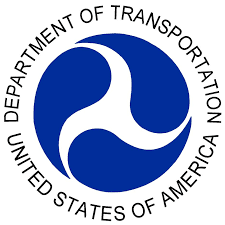U.S. Department of Transportation Selects Four Projects to Receive Over $27 Million to Improve Transportation Mobility and Access for Persons with Disabilities

As part of its comprehensive strategy to support accessibility across all modes of transportation for all travelers, the U.S. Department of Transportation (U.S. DOT) will provide $27 million to four projects that will incorporate innovative business partnerships, technologies, and practices to promote independent mobility. The funding supports the implementation of Phases 2 and 3 of the Complete Trip – ITS4US Deployment Program.
The program, which supports many of the Department’s strategic goals, is helping to modernize our transportation system to provide safe, affordable, and equitable access to opportunities and services for all travelers while reducing adverse community impacts.
“By bringing together public-sponsored and private-sponsored research, the program will enable communities to build local partnerships that develop and deploy integrated and replicable mobility solutions to achieve complete trips for all travelers,” said Deputy Assistant Secretary for Research and Technology Dr. Robert C. Hampshire. “For the first time, DOT has centered Equity as a Department-wide strategic goal. The ITS4US program is a critical step towards reducing inequities across our transportation systems and the communities they affect,” Dr. Hampshire added.
In 2020, the U.S. DOT selected five awardees for Phase 1 of its Complete Trip – ITS4US Deployment Program. The three-phased multimodal program identifies ways to provide more efficient, affordable, and accessible transportation options for underserved communities that often face greater challenges in accessing essential services, including people with disabilities, older adults, low-income individuals, rural residents, veterans, and limited English proficiency travelers.
The four awardees for Phases 2 and 3 are:
Heart of Iowa Regional Transit Agency (HIRTA)
- Location: Dallas County, Iowa
- Project: Health Connector for the Most Vulnerable: An Inclusive Mobility Experience from Beginning to End
- Award: $2,872,549
This project will implement a scalable and replicable solution that enables inclusive access to non-emergency medical transportation for all underserved populations and their caregivers by resolving access to barriers with the use of advanced technologies. Further, this solution will include information and wayfinding services to guide users for every step of their trip. This deployment will provide enhanced access to healthcare options for all travelers in Dallas County.
Georgia Department of Transportation (GDOT)
- Location: Gwinnett County, Georgia
- Project: Safe Trips in a Connected Transportation Network (ST-CTN)
- Award: $8,051,200
GDOT leads this project with support from the Atlanta Regional Commission. The ST-CTN system will provide Gwinnett County residents with detailed information and step-by-step navigation tailored for users’ specific needs along with a range of other features geared to improve trip efficiency and safety. This concept is comprised of an integrated set of advanced transportation technology solutions including connected vehicles, transit signal priority, machine learning, and predictive analytics to support safe and complete trips, with a focus on accessibility for those with disabilities, aging adults, and those with limited English proficiency. The ST-CTN system includes a mobile application that will provide users with the ability to create a personalized trip plan with information regarding the navigation of physical infrastructure, the ability to provide safe alternative trip routes when encountering unexpected obstacles, and the ability to ensure user safety throughout the trip.
University of Washington (UW)
- Location: Washington, Oregon, and Maryland
- Project: Transportation Data Equity Initiative
- Award: $9,659,000
This project aims to create the foundational data tools necessary for both public and private entities to collect, share, manage, and use transportation data that provide equitable outcomes to all travelers regardless of location, income, or disability. This effort includes: 1) working with existing standards committees to extend and update three existing, early-stage international data standards: OpenSidewalks, General Transit Feed Specification (GTFS)-Flex, and GTFS-Pathways; 2) developing a series of tools that help agencies, jurisdictions, and other stakeholders collect the data that can be stored with these refined data standards; and 3) using three unique accessible mobility applications to demonstrate these three very different uses of the data.
Niagara Frontier Transportation Authority (NFTA)
- Location: Buffalo, New York
- Project: Complete Trip Deployment in Buffalo, NY
- Award: $6,666,981
This project will improve mobility to, from, and within the Buffalo Niagara Medical Campus (BNMC) by deploying new and advanced technologies focused on addressing existing mobility and accessibility challenges. The project integrates an accessible trip planning tool with current transit services, indoor/outdoor wayfinding, community-based on-demand shuttle services that include a fleet of fully autonomous shuttles, and intersection pedestrian safety technologies aimed at providing complete trip support to travelers with disabilities in BNMC and neighboring communities. Central to the project is a complete trip platform that can factor in travelers’ preferences and accessibility-related needs in providing comprehensive trip planning and execution support to registered users. The platform, accessed both offline and online via multiple interfaces including an app, will integrate with multiple enabling technologies and services including fixed-route transit, community shuttles, smart intersections that use tactile and mobile technologies that assist travelers with disabilities navigate intersections safely, and wayfinding infrastructure such as smart signs and information hubs to support outdoor and indoor navigation.


